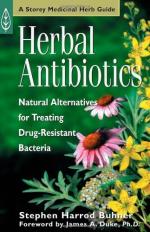|
This section contains 434 words (approx. 2 pages at 300 words per page) |

|
Drugs used to combat bacteria that cause infection.
Antibiotics are substances that combat bacteria, and, as a result, relieve the symptoms of infections caused by bacteria. They have only been available since the end of World War II (1945). There are millions of kinds of bacteria, and the bacteria that harm humans are called "pathogenic bacteria" or pathogens. Some pathogenic bacteria, such as tetanus, cause the human body to produce toxins or poisons as a by-product. These toxins circulate through the body, causing serious illness, or even death. The majority of infections by pathogenic bacteria do not produce these toxins, however. Rather, they cause localized infections, such as an ear infection. In babies and young children, antibiotics are used to treat strep throat; ear, sinus, and urinary tract infections; conjunctivitis; pulmonary infections, such as bronchitis and pneumonia; and skin infections, such as impetigo, caused by staph (staphylococcus) bacteria.
Antibiotics...
|
This section contains 434 words (approx. 2 pages at 300 words per page) |

|


